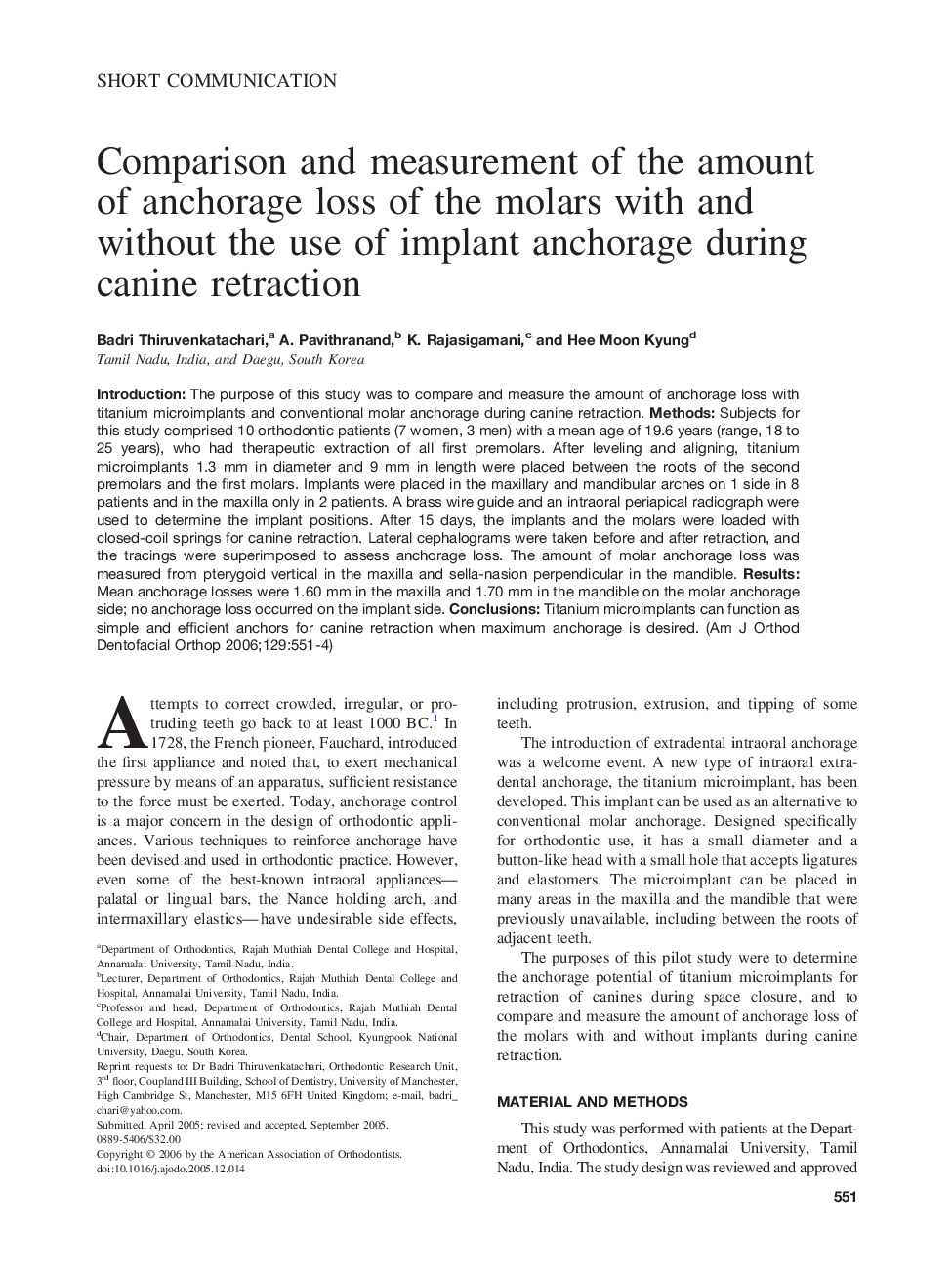| Article ID | Journal | Published Year | Pages | File Type |
|---|---|---|---|---|
| 3120506 | American Journal of Orthodontics and Dentofacial Orthopedics | 2006 | 4 Pages |
Introduction: The purpose of this study was to compare and measure the amount of anchorage loss with titanium microimplants and conventional molar anchorage during canine retraction. Methods: Subjects for this study comprised 10 orthodontic patients (7 women, 3 men) with a mean age of 19.6 years (range, 18 to 25 years), who had therapeutic extraction of all first premolars. After leveling and aligning, titanium microimplants 1.3 mm in diameter and 9 mm in length were placed between the roots of the second premolars and the first molars. Implants were placed in the maxillary and mandibular arches on 1 side in 8 patients and in the maxilla only in 2 patients. A brass wire guide and an intraoral periapical radiograph were used to determine the implant positions. After 15 days, the implants and the molars were loaded with closed-coil springs for canine retraction. Lateral cephalograms were taken before and after retraction, and the tracings were superimposed to assess anchorage loss. The amount of molar anchorage loss was measured from pterygoid vertical in the maxilla and sella-nasion perpendicular in the mandible. Results: Mean anchorage losses were 1.60 mm in the maxilla and 1.70 mm in the mandible on the molar anchorage side; no anchorage loss occurred on the implant side. Conclusions: Titanium microimplants can function as simple and efficient anchors for canine retraction when maximum anchorage is desired.
